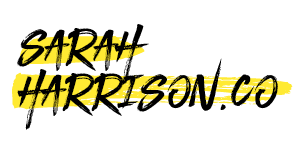Before you go hire a VR engineer and start building that Sim City-like earth education game…
Originally published at backstage.thedetermined.co
Seems like every time Marc and I run a Think Wrong or innovation workshop with folks in the regenerative or climate tech space, there’s always one team who comes up with the idea to build a VR Sim City-like game that educates people in a fun way about ecological systems.
It’s an AWESOME idea. It clearly needs to be built. And we encourage our teams to start thinking about how to build it.
But here’s where they go wrong:
The first thing they want to do is start talking to VR engineers and mobile game developers.
It’s a natural next step, right? We’re ecologists, scientists, entrepreneurs. We’re not game designers. So we want to start talking to people who know how to build games.
Sure… but going down that path is a long long road that ends in you trying to raise 5 million dollars on a dream.
Let me save you some time and effort, and help improve your chances of actually raising that funding when you eventually need it, too.
I’m not a game designer either; I’ve spent most of my career designing web and mobile software. And there’s one thing I’ve learned that has saved me a ton of resources in every project I do, and it’s what I now teach to design students and entrepreneurs I work with:
The roadmap to building your dream product does not start with hiring an engineering team and asking them how to build it.
The roadmap to building your dream product starts with you building a tiny, lo-fi, DIY prototype and putting it in front of your ideal audience to use it.
In the world of game design, that tiny product isn’t made with pixels or code. I learned later in my career a technique that’s been used by every game designer since the beginning of time — playtesting.
You want to start playtesting your game before you hire any developers or designers to start building it.
How do you do that?
Paper prototyping.
Every good game designer starts designing a game first by using real world, analog game pieces made of paper, cardboard, whatever’s around, to do playtesting.
If you put your vision of a super rad VR Sims City-like educational game into paper and marker stick figures, here’s what happens:
You figure out how you want your game to work.
You get into the details about the story, the characters, and the rules of the game.
And most importantly, you have something you can start playtesting with.
Once you playtest your paper-marker-stick figure game ideas, you start to get valuable feedback from your players.
What’s fun? What’s boring?
What’s actually accomplishing the goals you want your game to accomplish?
Are they learning about ecosystems?
Are they starting to care about clean air, clean water, growing food, or whatever it is you want to instill in your people?
You can iterate quickly, changing the rules of the game as you test, trying out new ideas about how the game will work…
Without having spent ANY money working with engineers or designers.
And THEN, once you’ve iterated your way to a storyline or set of rules that your players are consistently finding fun…
THEN you can start resourcing and building a team. And you’ll have the knowledge of the world you want to create to help direct your team. You can give your team much-needed direction, limitations, and parameters they can use to put their creative skills to work.
Your team gets to be creative doing what they do best, and you rest assured that what they build will be fun to play and meet your education goals and vision.
AND you have a ton of excited players eager to see you turn this game into a real product. Their testimonials and enthusiasm is what will help you raise funding to hire that team.
So don’t skip the most important step towards making your dream a reality. Do the work to create a lo-fi DIY prototype of your game and start playtesting it with people in your target market.
Make a huge amount of progress on your game without spending a huge amount of money and wasting a lot of time and energy going down a fruitless path.
Take all that you’ve learned and use it to raise funds, build a team, and lead them towards creating your vision.


